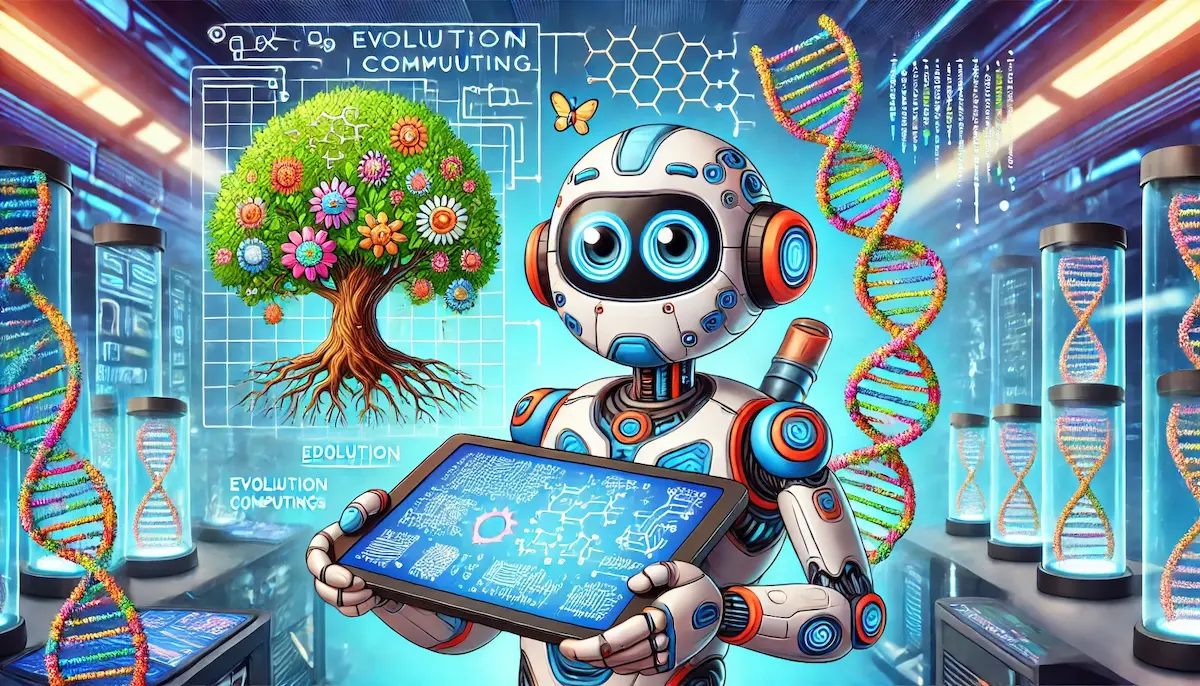Evolutionary computing is a subset of artificial intelligence that involves computational algorithms inspired by the principles of natural evolution. These algorithms use mechanisms such as selection, mutation, and recombination to evolve solutions to complex problems over successive generations. This approach is particularly useful for optimization and search problems where traditional methods may fall short.
Principles of Evolutionary Computing
Population-Based Search
Evolutionary algorithms work with a population of potential solutions rather than a single solution. This diversity allows the algorithm to explore a wide solution space and avoid getting trapped in local optima.
Selection
Selection is the process by which the fittest individuals are chosen to pass their genes to the next generation. The fitness of an individual is determined by a fitness function, which measures how well it solves the problem. Common selection methods include roulette wheel selection, tournament selection, and rank-based selection.
Recombination (Crossover)
Recombination combines the genetic material of two parent solutions to produce offspring. This process introduces new genetic combinations into the population, promoting diversity and potentially discovering better solutions. Various crossover techniques are used depending on the representation of solutions, such as single-point, multi-point, or uniform crossover.
Mutation
Mutation introduces random changes to individual solutions. This mechanism helps maintain genetic diversity within the population and allows the algorithm to explore new areas of the solution space. Mutation rates are carefully controlled to balance exploration and exploitation.
Replacement
After selection, recombination, and mutation, a new generation of solutions is created. The replacement strategy determines which individuals from the old and new generations survive to form the next population. Common strategies include generational replacement, where the entire population is replaced, and steady-state replacement, where only a few individuals are replaced at a time.
Types of Evolutionary Algorithms
Genetic Algorithms (GAs)
Genetic algorithms are the most well-known type of evolutionary algorithm. They use binary strings to represent solutions and employ genetic operators like crossover and mutation to evolve the population. GAs are widely used in optimization, scheduling, and machine learning tasks.
Genetic Programming (GP)
Genetic programming evolves computer programs to solve problems. Instead of binary strings, GP represents solutions as tree structures, where nodes represent functions or operations and leaves represent inputs. GP is used in automated code generation, symbolic regression, and evolving machine learning models.
Evolution Strategies (ES)
Evolution strategies focus on optimizing real-valued parameters. Unlike GAs, which use fixed-length binary strings, ES uses vectors of real numbers and emphasizes mutation over recombination. ES is particularly effective for continuous optimization problems in engineering and science.
Differential Evolution (DE)
Differential evolution is designed for continuous optimization problems. It uses the differences between randomly selected pairs of individuals to create new solutions, combining elements of mutation and crossover. DE is known for its simplicity and effectiveness in handling complex optimization tasks.
Ant Colony Optimization (ACO)
Ant colony optimization is inspired by the foraging behavior of ants. It uses a population of artificial ants to explore the solution space and build solutions based on pheromone trails. ACO is particularly effective for combinatorial optimization problems like the traveling salesman problem and network routing.
Applications of Evolutionary Computing
Optimization Problems
Evolutionary computing excels in solving complex optimization problems where traditional methods may struggle. Applications include:
- Logistics and Scheduling: Optimizing supply chain logistics, job scheduling, and resource allocation.
- Engineering Design: Designing structures, optimizing control systems, and tuning parameters of complex systems.
- Financial Modeling: Portfolio optimization, risk assessment, and algorithmic trading.
Machine Learning
Evolutionary algorithms are used in machine learning for tasks such as:
- Feature Selection: Identifying the most relevant features for predictive models.
- Hyperparameter Tuning: Optimizing the parameters of machine learning algorithms to improve performance.
- Neural Network Evolution: Evolving the architecture and weights of neural networks.
Bioinformatics
In bioinformatics, evolutionary computing helps with:
- DNA Sequence Alignment: Finding optimal alignments of DNA sequences for genetic analysis.
- Protein Folding: Predicting the three-dimensional structure of proteins.
- Drug Design: Optimizing the structure and properties of potential drug molecules.
Advantages and Challenges
Advantages
- Robustness: Evolutionary algorithms are robust and can handle noisy, dynamic, and complex environments.
- Flexibility: They can be applied to a wide range of problems with different representations and constraints.
- Exploration: Their population-based approach allows them to explore a broad solution space and avoid local optima.
Challenges
- Computational Cost: Evolutionary algorithms can be computationally intensive, requiring significant processing power and time.
- Parameter Sensitivity: The performance of evolutionary algorithms depends on the choice of parameters, such as population size, mutation rate, and crossover rate, which may require careful tuning.
- Convergence Speed: While effective at finding good solutions, evolutionary algorithms may converge more slowly than some specialized optimization techniques.
Conclusion
Evolutionary computing provides a powerful and versatile framework for solving complex optimization and search problems. By drawing inspiration from natural evolution, these algorithms offer robust, flexible, and scalable solutions across various fields, from engineering and machine learning to bioinformatics and finance. As computational capabilities continue to advance, evolutionary computing will play an increasingly important role in addressing some of the most challenging problems.
Blockfine thanks you for reading and hopes you found this article helpful.
